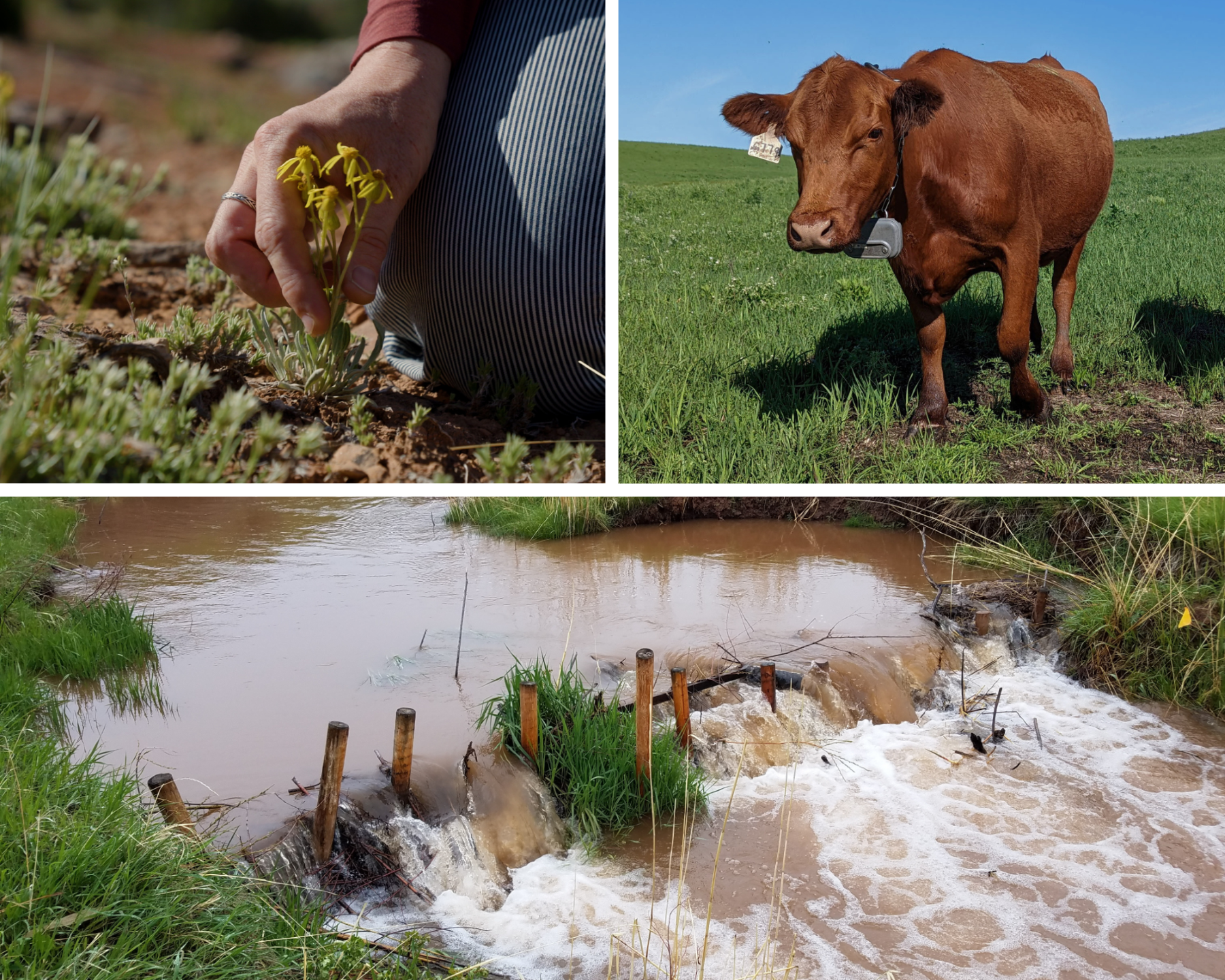Plan Your Visit
Red Canyon Ranch is open May 1 through November 30, weather permitting, for hiking and fishing, with advanced reservations required. TNC also offers outreach events and volunteer workdays. To safeguard wildlife at the preserve, please leave your dogs at home. We cordially invite you to explore Red Canyon and see for yourself how conservation and ranching can thrive together.
Recreation
To learn more about fishing opportunities, visit Fishing at Red Canyon Ranch. To get hunting permission, submit a conservation resume to Sharing the Land and email Tayler DeBrosse at tayler.debrosse@tnc.org.
Tour with the Red Canyon Ranch Travelstory
The Travelstory audio tour includes 10 stories, which will take you about one hour to complete. The GPS-triggered stories play as you drive, and in some places, we’ll encourage you to briefly stop your car to listen and observe points of interest.
What to See: Plants and Animals
For more than 10,000 years, people have been drawn to Red Canyon for the same reason this place remains important today—the wealth and diversity of plants and animals that can be found there. The earliest people to find shelter, sustenance and solace in Red Canyon were Folsom hunters 10 millennia ago. They are best remembered for courageously hunting mammoth and giant bison with spears, but what probably brought them to Red Canyon was its plant resources, the same variety and unique ecosystem that attracted TNC to the ranch.
From one camp, native people could harvest a multitude of edible and medicinal plants. By walking a short distance to higher elevations, they could gather flora in different stages of development and thus postpone the labor of actually moving camp. The availability of game and plant foods brought their nomadic descendants back to Red Canyon for untold generations.
Although the giant bison and mammoth are gone, an exciting range of wildlife roams the ranch. Mule deer, elk and pronghorn are common sights, as are a variety of birds. With a good set of binoculars, you might sight a black bear foraging for roots and berries and count yourself lucky to catch even a glimpse of an elusive mountain lion. Most people are surprised to learn that a herd of roughly 600 cattle grazes Red Canyon Ranch.
But cattle play a vital role in conserving sensitive lands. Ranchers can use their livestock to mimic the way wildlife, such as bison or elk, stir up the soil and prune back plants. They can also strategically move cattle to allow native plants to recover and soil health to rejuvenate, which benefits local wildlife.
Additional information:
The Red Canyon Ranch encompasses a large cross-section of the Wind River Mountain habitats, representing a diversity of elevations, ranging from 5,500 to 7,800 feet. The ranch is home to a diverse set of geological formations, including sandstone, limestone and dolomite, along with a series of sedimentary ridges and valleys dipping to the northeast off the southern Wind River Range. Uplands along the western edge of the site include Douglas-fir and aspen woodlands on north-facing slopes, sagebrush shrublands and grasslands on other slopes and willow shrublands and montane sedge meadows in riparian areas.
Red Canyon Rim along the eastern edge of the site contains shale and sandstone beds of the Chugwater and Nugget Formations and supports Utah juniper woodlands, black sagebrush, grasslands, and a variety of rare plants. Lower elevation slopes contain a mosaic of mountain big sagebrush and black sagebrush shrublands and grasslands on extensive limestone dipslopes, and narrow riparian fringes of chokecherry along intermittent streams. The climate and geologic formations support five globally rare plants, including Barneby's clover (Trifolium barnebyi), sharp-leaved phlox (Phlox pungens), Fremont's bladderpod (Lesquerella fremontii), a twinpod (Physaria saximontana var. saximontana) and an Easter daisy (Townsendia nuttallii). Along with rare plants, this diversity of habitat is important winter range for all the native ungulate species in Wyoming.
Twenty-five miles of important riparian habitat twist and turn, including sections of the Little Popo Agie River, Cherry Creek, Deep Creek, Barrett Creek and Red Canyon Creek, which have cut deep, narrow canyons through the dipping sedimentary rocks, creating ideal nesting habitat for peregrine falcons and golden eagles. The riparian zones have narrow shrub fringes of alder, dogwood, and other shrubs with beaver ponds and willow thickets that provide homes for neo-tropical birds, deer and moose.




